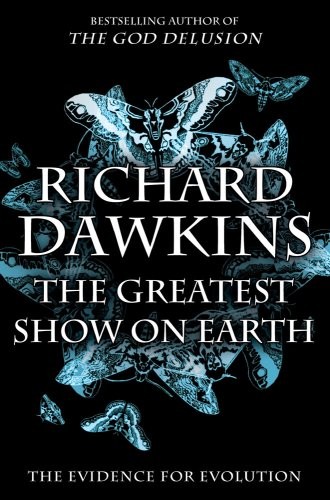
November 24 marked the 150th anniversary of the publishing of Charles Darwin's defining work, The Origin of Species, and for commemoration Richard Dawkins has written his most accessible book to date, The Greatest Show on Earth. With a 2008 Gallop poll showing that 44 percent of Americans believe God created man in his present form within the last 10,000 years, Dawkins, an adamant atheist, follows his bestseller The God Delusion attempting to reach those who refuse to accept evolution as a fact simply because they don't understand it.
Like Galileo's profound concurrence with Copernicus's heliocentric cosmology, which decimated the reigning geocentric view of the Earth and found him convicted by the Catholic Church of being "vehemently suspect of heresy," Dawkins' staunch defense of Darwin's theory of evolution is presented vigorously while under attack by fundamentalists.
These supporters of intelligent design, who Dawkins aligns with holocaust deniers by referring to them as "history deniers," may be under a counterattack. However, The Greatest Show on Earth is not merely a gathering of arguments aimed at them and their ilk. Instead, Dawkins presents the beauty and eloquence of evolution through embryology, geology, paleontology, "unintelligent design," cosmology and historical events. Articulating such wonder with modern relevance Dawkins states, "It is no accident that we see green almost wherever we look... Without green plants to outnumber us at least 10 to one, there would be no energy to power us."
Dawkins demonstrates how cells, unlike anything humans design, work from a bottom-up architecture. This beautiful microscopic exchange is similar to the way thousands of individual starlings gracefully flock together while flying at speeds at which a collision could cause serious injury. Many biologists have referred to this as one of the wonders of the world. For those inclined, YouTube has various videos of this breathtaking display.
Through the sharing of a past ancestor Dawkins ties rabbit to leopard, porcupine to dolphin, wallaby to giraffe, and human to haddock. This is not to say that one should ever come across a "rabbitard" or a "porcuphin," but that in the distant past all species can be traced to a common ancestor. Dawkins' portrayal of these gradual transitions is delivered with an awe that is magnified when we observe the fact that humans, in their modern form, have only been around for between 200,000 and 250,000 years. With that in mind, it must be noted that the future we are heading toward should be preserved so this grand experiment can continue. Learning to see ourselves as a dot in the spectrum of life, one can't help but try and picture the unimaginable relatives that will evolve from us. Upon this evaluation, a burning bush is hardly impressive.
Comments